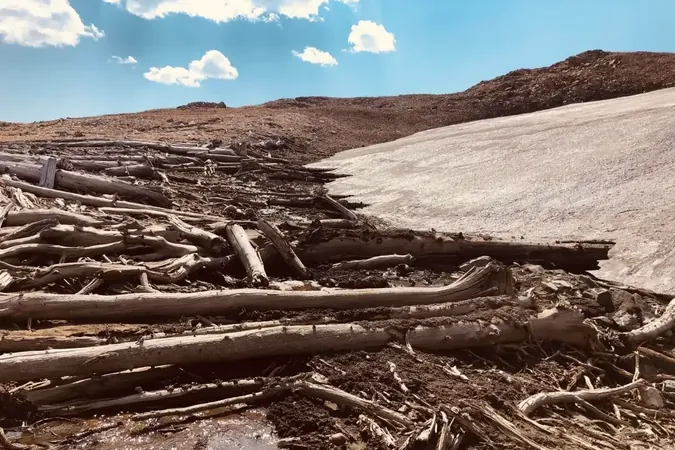
The Incredible Discovery of a 6,000-Year-Old Forest Beneath Melting Ice in the Rocky Mountains
2025-01-19
Author: Ling
Introduction
As climate change continues to reshape our planet, the thawing alpine ice of the Rocky Mountains has unveiled a startling relic from the past: a 5,900-year-old whitebark pine forest, previously hidden beneath layers of ice for millennia. This remarkable find was uncovered during an archaeological survey on the Beartooth Plateau in Wyoming, where scientists estimate they’ve discovered over 30 ancient trees.
Significance of the Discovery
Located at an astonishing height of 3,100 meters above sea level—180 meters above today’s tree line—this forest serves as an invaluable glimpse into the Earth’s climatic history. Cathy Whitlock from Montana State University emphasizes the significance of this discovery, stating that it “provides insight into high-elevation conditions at a time when the climate was significantly warmer than it is today.”
Climate Analysis
Analysis of the tree rings and carbon dating has allowed researchers to establish that these trees thrived between 5,950 and 5,440 years ago, during a period when temperatures were gradually declining. But what triggered this temperature drop? Scientists have traced the phenomenon back to volcanic eruptions in the Northern Hemisphere, particularly in Iceland, which released ash that blocked sunlight and cooled the atmosphere. This declining temperature would eventually prove too harsh for the forest to survive.
Preservation Conditions
The well-preserved condition of the fallen trees suggests that they were effectively entombed in ice, shielded from the harsh elements for the last five millennia. As Joe McConnell from the Desert Research Institute explains, the expansion of ice patches due to the colder climate played a crucial role in this preservation by "entombing" the remnants of the once-thriving woodland.
Impact of Climate Change
Today, factors such as rising global temperatures are causing these ice patches to melt, revealing ancient ecosystems that were long thought to be lost to time. Whitlock points out that as temperatures continue to rise, the current tree line is "likely to shift upslope," illustrating the ongoing impact of anthropogenic climate change on alpine environments.
Historical Context
This find also resonates with previous archaeological discoveries in the Rocky Mountains, including wooden shafts used in ancient hunting, dating back over 10,000 years. Such artifacts highlight the long-standing human interaction with these high-elevation ecosystems.
Conclusion
While the unearthing of this ancient forest offers a fascinating glimpse into our climate's distant past, it’s also a poignant reminder of the fragility of our planet’s ecosystems in the face of ongoing climate change. As we continue to face increasing global temperatures, the legacy of past climatic conditions serves not only as a scientific wonder but as a critical warning about our environment's precarious state.
Future Discoveries
What other secrets lie beneath the melting ice, waiting to be discovered? Stay tuned as scientists continue to explore these ancient realms!



 Brasil (PT)
Brasil (PT)
 Canada (EN)
Canada (EN)
 Chile (ES)
Chile (ES)
 Česko (CS)
Česko (CS)
 대한민국 (KO)
대한민국 (KO)
 España (ES)
España (ES)
 France (FR)
France (FR)
 Hong Kong (EN)
Hong Kong (EN)
 Italia (IT)
Italia (IT)
 日本 (JA)
日本 (JA)
 Magyarország (HU)
Magyarország (HU)
 Norge (NO)
Norge (NO)
 Polska (PL)
Polska (PL)
 Schweiz (DE)
Schweiz (DE)
 Singapore (EN)
Singapore (EN)
 Sverige (SV)
Sverige (SV)
 Suomi (FI)
Suomi (FI)
 Türkiye (TR)
Türkiye (TR)
 الإمارات العربية المتحدة (AR)
الإمارات العربية المتحدة (AR)